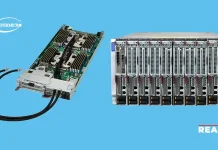Bioelectronic medicine is seen as a game-changer, with the potential to revolutionize treatment for inflammatory and other chronic diseases. Bioelectricity regenerative medicine helps cells rebuild themselves and promotes healing.
According to a report by Extrapolate, the global bioelectric medicine market size is projected to reach USD 24.36 billion by 2030, expanding at a CAGR (compound annual growth rate) of 5.0% between 2022 and 2030.
In this blog, let us have a holistic view of the bioelectric medicine market.
What is Bioelectronic Medicine?
Bioelectric medicine is a therapeutic field that focuses on curing diseases using electrical pulses rather than drugs. This approach relies on the body’s current physiological pathways to provide effects that fight diseases similar to drug therapies. Various conditions, such as epilepsy, Parkinson’s disease, and bladder control, are treated using this therapy. There is an immense amount of research done in the field to expand the application into other areas like memory and sight improvement.
Scientific Foundations of Bioelectric Medicine
Since ancient times, there have been sufficient pieces of evidence of using electricity to treat ailments. In earlier times, Egyptians and Greeks used electric fish to control pain and manage conditions like gout. The scientific interest in discovering the healing properties of electricity grew in the 1930s and 1940s. By then, the focus was on neuromodulation and its applications in treating conditions like epilepsy.
In 1997, the Food and Drug Administration (FDA) gave approval to implant Vagus Nerve Stimulation (VNS) for treating refractory epilepsy. Later, in 2005, VNS was approved for treatment-resistant depression. Since then, VNS has become a standard neuromodulation treatment plan that influenced the bioelectronic medicine market. VNS has become the key conduit for electrical stimulation that can impact various body functions, including heart rate and inflammation.
Dr. Kevin Tracey discovered the inflammatory reflex in 2002, which involves the nervous system controlling inflammation. It is a biological pathway where neurons sense and reduce acute inflammation. This discovery suggested that electrical stimulation could regulate the immune system and inflammation, leading to potential treatments for inflammatory diseases. Stimulating the vagus nerve can reduce inflammation and treat chronic inflammatory diseases.
Research has shown that stimulating the vagus nerve can effectively treat diseases like rheumatoid arthritis (RA) and Crohn’s disease. Studies have also identified biomarkers that help measure the effectiveness of these treatments.
Key Developments in the Bioelectric Medicine Market
The field has attracted significant investments from companies like GSK, Google, and other industry leaders. Public sector support from the National Institutes of Health (NIH) and Defense Advanced Research Projects Agency (DARPA) further indicates the potential of bioelectronic medicine.
Neuromodulation involves altering nerve activity via electrical stimulation or chemical agents. It is an effective approach used in treating conditions like chronic pain, epilepsy, and Parkinson’s.
Businesses in the bioelectronic medicine market are investing heavily in their research and development to have technological advancements. The focus is on making the devices more compact and have improved battery capacities or wireless charging. Advancements in electronics, such as Moore’s Law and the development of tiny batteries and wireless charging, have enabled the development of compact and more efficient bioelectronic devices. These technological improvements are critical in making bioelectronic medicine more accessible and effective. It has helped the bioelectricity regenerative medicine market to grow at an exponential rate.
SetPoint Medical developed the MicroRegulator. It is a small implantable device designed to deliver bioelectronic doses to treat inflammatory conditions. The device is rechargeable, wirelessly charged, and can be updated with new discoveries. The company has conducted successful clinical trials showing the efficacy of bioelectronic medicine in reducing disease symptoms. Hence it has become a versatile tool in bioelectronic therapy.
Clinical Trials and Results of Bioelectric Medicine
Clinical trials with rheumatoid arthritis patients showed significant improvements in disease activity scores and quality of life, indicating that bioelectronic treatments can be a viable alternative to drugs.
Early trials in Crohn’s patients also show promise, with several patients achieving remission.
The potential applications of bioelectronic medicine are broad, targeting diseases like diabetes, hypertension, multiple sclerosis, and Alzheimer’s. Research is ongoing to explore new ways to harness electrical stimulation for therapeutic purposes.
Potential Challenges and Considerations of Bioelectric Medicine
Acceptance and adoption of this treatment therapy pose a significant bottleneck. Bioelectricity regenerative medicine faces critical skepticism from pharmaceutical companies and healthcare providers regarding the adoption of implantable devices over traditional drug therapies. Businesses in the market need to show the safety, efficacy, and cost-effectiveness of using bioelectronic treatments to address this bottleneck.
The healthcare industry is one of the sectors that is highly regulated. Any emerging medical technology, including bioelectric medicine, will have to navigate through stringent regulatory environments and address ethical concerns around implantable devices and long-term patient outcomes.
Bioelectric Medicine Is Bringing A Paradigm Shift in the Healthcare Sector
Bioelectronic medicine has the potential to bring in a paradigm shift in how diseases are treated. It helps healthcare providers migrate from pharmaceutical-based approaches to electrical stimulation-based therapies. The field is poised for immense growth, with ongoing research and clinical trials paving the way for widespread adoption in the coming years.
Browse More Posts:-
Vertical Farming Market
Vertical Farming Market Share
Vertical Farming Market Trends




